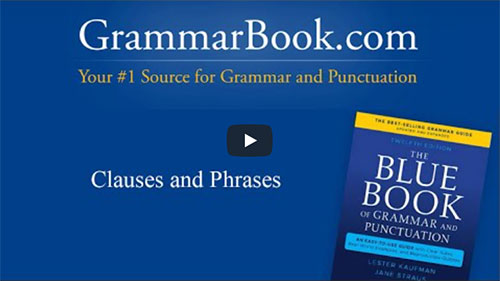|
Mr. Burns is wiser than I.
Tara knows more about football than baseball.
Yama's thinking seeks truth; his writing, the expression of it. |
Many of us are familiar with these types of statements in English. They are elliptical sentence constructions, which omit sentence components without losing clarity. Those components can be words, phrases, or clauses.
Through their understood omissions, elliptical sentences conserve words while adding a touch of style and eloquence. Consider the same examples above when we write them out fully:
Mr. Burns is wiser than I am wise.
Tara knows more about football than she does about baseball.
Yama's thinking seeks truth; his writing seeks the expression of it. |
The elliptical versions give the same information while remaining grammatical and avoiding unneeded repetition: i.e., they are shorter without a change in meaning or context. As readers, we can provide the missing words ourselves.
Elliptical Sentence Constructions: Common Types
Elliptical sentences often appear as one of three main types: noun ellipsis, verb ellipsis, or verb-phrase ellipsis. In the examples that follow, omissions appear in [brackets].
A noun ellipsis omits a repeated noun from a sentence:
Full: I did four laps around the track, and Marcella did four laps around the track too.
Elliptical: I did four laps around the track, and Marcella did [four laps around the track] too. |
A verb ellipsis omits a repeated verb from a sentence:
Full: I ate steak, and Jennifer ate fish.
Elliptical: I ate steak, and Jennifer, [ate] fish. |
A verb-phrase ellipsis omits a full repetitive phrase tied to the sentence verb:
Full: Mr. Burns is wiser than I am wise.
Elliptical: Mr. Burns is wiser than I [am wise]. |
Elliptical Sentence Constructions: Pronoun Case
When they include pronouns, elliptical sentences will often need the pronoun form—subjective or objective—that provides the intended meaning.
Consider the following sentences:
They speak to her as much as I. (subjective pronoun)
They speak to her as much as me. (objective pronoun) |
In elliptical writing, our use of the objective or subjective pronoun states the following:
They speak to her as much as I [speak to her].
They speak to her as much as [they speak to] me. |
In informal American English, we also often hear elliptical sentences with an objective pronoun in place of what would correctly be a subjective pronoun:
George is younger than me.
You are better at that game than him. |
Going by a strict application of elliptical use, these sentences would appear to be saying:
George is younger than [he is] me.
You are better at that game than [you are] him. |
However, we can note that in addition to being a conjunction, the word than can function as a preposition meaning "in or by comparison with":
George is younger than [in comparison with] me.
You are better at that game than [in comparison with] him. |
While these treatments have grammatical validation as shown, in formal writing it is best to maintain proper use of subject pronouns:
George is younger than I.
You are better at that game than he. |
Elliptical Sentence Constructions: Punctuation
Proper punctuation is important to establishing clarity in elliptical sentences. The most common punctuation in elliptical constructions will often be commas and semicolons.
When the elliptical construction includes two independent clauses, the second clause with the omission is often separated from the first clause with a semicolon and the omission is marked by a comma:
Full: Mason makes his pottery best during the quiet of night; Viktor makes his pottery best by the bright light of day.
Elliptical: Mason makes his pottery best during the quiet of night; Viktor, by the bright light of day. |
The same technique can be applied when the omission is only a single word (e.g., the shared verb between two clauses):
Full: The song's music and melody are inspiring; its lyrics are equally heartening.
Elliptical: The song's music and melody are inspiring; its lyrics, equally heartening. |
Elliptical sentences may sometimes favor the omission of separate words in the second clause. In these instances, the omissions in the second clause would not be marked by a comma.
Full: Caleb describes his home as a sanctuary from the demands of the day; Andres describes his home as the refuge from the unknown.
Elliptical: Caleb describes his home as a sanctuary from the demands of the day; Andres his as the refuge from the unknown. (The separate words "describes" and "home" are omitted.) |
Elliptical constructions with commas and semicolons can be particularly useful in longer passages with numbers and statistics:
| In 2016, he averaged 22.3 points per game; in 2017, 19.7; in 2018, 16.4; and in 2019, 20.3. |
By now you're likely intuiting how punctuation influences pacing and clarity in elliptical sentences. Consider this sentence that aims to be elliptical without punctuation:
| I ordered coffee and Marta tea. |
Without punctuation, the sentence can be interpreted as having one verb (ordered), one indirect object (Marta), and two direct objects (coffee, tea): I ordered coffee and [I ordered] Marta tea.
With punctuation, we have a much clearer ellipsis:
I ordered coffee; Marta, tea.
I ordered coffee, and Marta, tea. |
Related Topics
Ellipsis Marks
Ellipsis Four-Dot Method
| 




